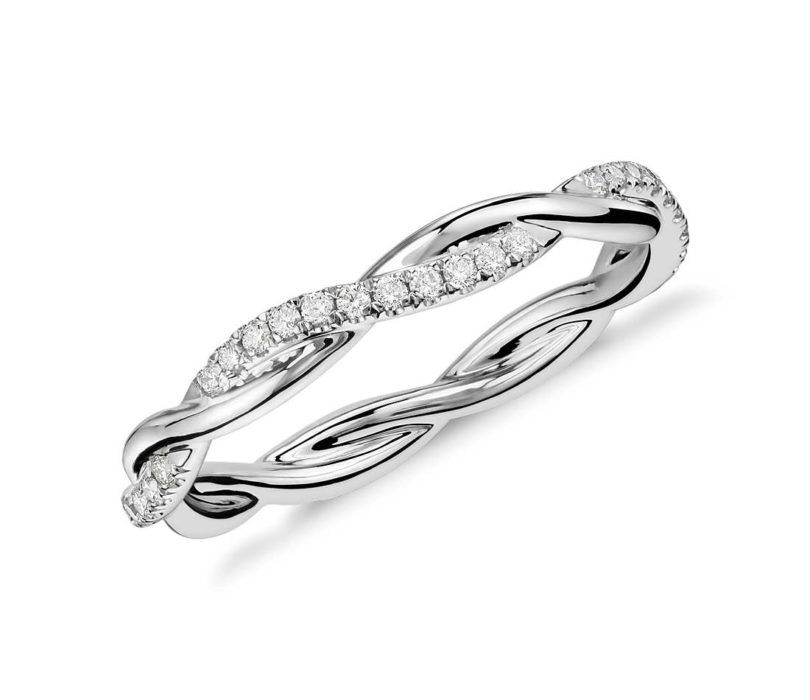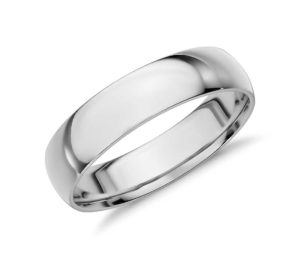
As Jewelry Shopping Guide editors, we write about things that we love and we think you’ll like too. We often have affiliate partnerships, and may generate some revenue from these links at no cost to you.
Although rhodium plating is commonly used in jewelry, not many people know what it is. Rhodium plating is used to enhance the luster and durability of metals such as silver and white gold and gives a smooth, shiny finish to the jewelry. It is especially attractive when used for diamond rings, as it can really enhance the brilliance of the diamond. However, there are some downsides to choosing rhodium plating, such as the time and money involved in ongoing re-plating over the years.
Not sure if rhodium plating is something you want to deal with? Here we outline the
What is rhodium?
First things first, rhodium is a rare and precious element that can be 10 to 25 times more expensive than gold. Rhodium is a member of the platinum group of metals and is silver-hued, highly reflective and does not tarnish or corrode. It is harder than gold and is highly durable.
However, rhodium is a very brittle metal and is not easily shaped or formed. As a result, pure rhodium cannot be made into jewelry. On its own it can easily crack and break somewhat like glass. But when used to plate other jewelry, rhodium enhances the durability of the metal.
10 things you need to know about rhodium plating before you buy
Why should I rhodium plate my jewelry?
Rhodium plating, also known as rhodium dip or rhodium flashing, is used to increase the durability, luster and light reflection of a piece of jewelry. Because it is a hard metal, a rhodium plated piece of jewelry will be more scratch resistant. Rhodium plating is mainly used on silver-hued metals, such as white gold, palladium or silver. Most rhodium plating has a thickness of .75 to 1.0 microns.

How thick should the rhodium plating be?
The ideal thickness for rhodium plating is .75 to 1.0 microns. Although this may sound extremely thin, it is considered thick enough for rings and other jewelry items that are exposed to rough wear. For jewelry items such as earrings and pendants that are more sheltered or for jewelry that is not worn frequently, a thickness of .10 to .50 is acceptable.
If the rhodium plating is too thick, it can crack due to rhodium’s brittleness. If, however, rhodium plating is too thin, it can cause the jewelry to become discolored. Jewelers have to ensure that they plate the jewelry with the ideal
Can I rhodium plate a yellow gold piece?
Yes. Rhodium plating can be used on yellow gold to change its color to white. However, bear in mind that as the plating starts to wear off, the yellow color will start to bleed through. This will result in a piece of jewelry that looks discolored or yellow-tinted. To avoid that, the piece may require re-plating more frequently.
Should I rhodium plate sterling silver?
Sterling silver is a white metal and does not need rhodium plating to acquire its color. However, it tends to tarnish over time. To prevent this, rhodium plating silver jewelry will ensure that the piece is highly lustrous and remains tarnish-free for a long time.
Over time, as the plating wears off, the white of the silver will come through, but will not be noticeable like gold. Those exposed sections may acquire some tarnish but this can easily be polished at home.
Is rhodium plated jewelry safe to wear?
Yes, it is. Because rhodium plating is hypoallergenic, you won’t get skin reactions by wearing rhodium plated jewelry. This is because rhodium does not contain any allergens such as nickel. In fact if you have a piece of jewelry that is causing you skin reactions, rhodium plating the piece can eliminate this problem.
However, note that while rhodium itself will not cause any rashes, white gold often contains nickel in its alloys. As the rhodium plating wears off, you may be exposed to nickel allergies as your skin comes into contact with the original metal of the jewelry.
What is the process of rhodium plating?
Rhodium is plated using an electroplating process. For a piece of jewelry to be plated, it must first be thoroughly cleaned to remove all contaminants. If there is any dirt on the piece, the plating will not hold.
Distilled water, steam cleaning and electro cleaning are some ways that the item is cleaned before it is dipped into the rhodium solution. A positive electrical charge is then used to fuse the rhodium onto the base metal.
Care must be taken, because if the electric current is too high, the rhodium plating will turn black. The process takes roughly around an hour and a half to be completed.
